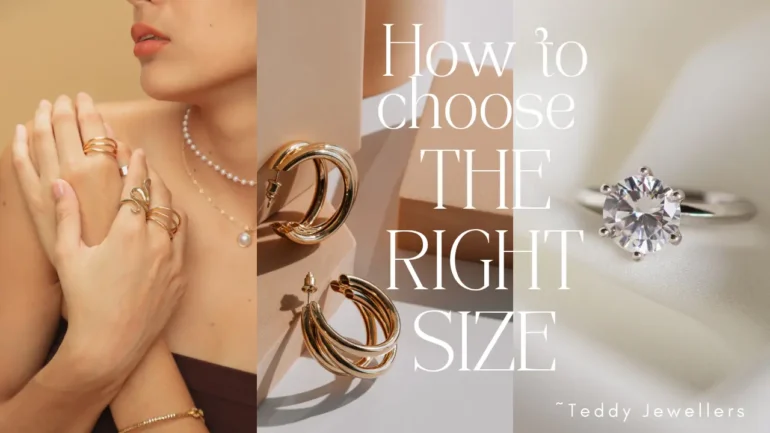Mastering Vintage Jewelry Shopping: Expert Tips for Finding Treasures in 2024

Embark on a journey through time with our expert tips for vintage jewelry shopping. From navigating online stores to uncovering hidden gems in vintage boutiques, learn the secrets to finding authentic and exquisite pieces. Explore the latest trends, care tips, and insider advice to become a savvy vintage jewelry collector. Whether you’re a seasoned enthusiast or new to the world of vintage treasures, discover how to shop like a pro in 2024.
Embarking on the quest for vintage jewelry is like diving into a treasure chest filled with history, charm, and unparalleled craftsmanship. Whether you’re a seasoned collector or a curious newcomer, finding authentic and exquisite vintage pieces can be both exciting and challenging. With the right knowledge and tips, you can master the art of vintage jewelry shopping in 2024. This guide will help you navigate the world of vintage jewelry, from online stores to hidden boutique gems, ensuring you make informed and rewarding purchases.
Table of Contents
ToggleUnderstanding Vintage Jewelry
What is Vintage Jewelry?

Vintage jewelry refers to pieces that are at least 20 years old. These items often reflect the fashion and craftsmanship of their respective eras, offering unique designs and high-quality materials that are rarely found in contemporary jewelry.
Why Buy Vintage Jewelry?
- Unique Designs: Vintage pieces often feature distinctive styles that stand out in today’s market.
- Quality Craftsmanship: Many vintage items are handcrafted with superior materials.
- Investment Potential: Authentic vintage jewelry can appreciate in value over time.
- Eco-Friendly Choice: Purchasing vintage is a sustainable option, reducing the demand for new materials.
Expert Tips for Vintage Jewelry Shopping
1. Research Before You Buy

Knowledge is power when it comes to buying vintage jewelry. Educate yourself about different eras, styles, and designers. Understanding the characteristics of each period will help you identify genuine pieces and avoid counterfeits.
2. Know Your Source

Whether shopping online or in person, it’s crucial to buy from reputable sources. Look for well-established vintage jewelry stores, both brick-and-mortar and online, with positive reviews and a clear return policy.
3. Inspect for Authenticity
Authenticity is key in vintage jewelry shopping. Here’s how to ensure you’re getting the real deal:
- Hallmarks and Maker’s Marks: Check for stamps indicating the metal’s purity and the manufacturer’s mark.
- Condition: Examine the piece for signs of wear that align with its age.
- Documentation: Authentic pieces often come with certificates of authenticity or provenance.
4. Evaluate the Condition
Vintage jewelry may show signs of wear, but significant damage can affect its value and wearability. Look for:
- Secure Settings: Ensure gemstones are firmly set.
- Functional Clasps and Hinges: Test all closures and moving parts.
- Minimal Wear: Surface scratches are normal, but deep gouges or missing elements can be problematic.
5. Understand Pricing
Prices can vary widely based on the rarity, condition, and demand for a piece. Compare prices across different sellers and platforms to ensure you’re paying a fair amount.
6. Seek Professional Appraisal
Before making a significant purchase, consider getting the piece appraised by a professional. This step can confirm authenticity and provide a clear understanding of its market value.
7. Trend Awareness
Stay updated with the latest trends in vintage jewelry. In 2024, look out for:
- Art Deco Pieces: Known for geometric designs and vibrant colors.
- Mid-Century Modern: Featuring clean lines and understated elegance.
- Victorian Revival: Romantic and intricate designs making a comeback.
8. Proper Care and Maintenance
Caring for vintage jewelry ensures its longevity and maintains its beauty. Here are some tips:
- Regular Cleaning: Use a soft brush and mild soap to clean your pieces.
- Proper Storage: Keep jewelry in a dry, secure place, preferably in individual pouches or compartments to prevent scratches.
- Avoid Chemicals: Remove jewelry when applying lotions, perfumes, or engaging in household cleaning.
Where to Shop for Vintage Jewelry in 2024
Online Stores

- Etsy: A treasure trove for vintage enthusiasts with various sellers offering unique pieces.
- eBay: Great for auctions and finding rare items, but ensure seller credibility.
- 1stdibs: High-end vintage jewelry from verified sellers.
Physical Stores
- Antique Shops: Often carry a curated selection of vintage jewelry.
- Estate Sales: Excellent places to find hidden gems.
- Jewelry Shows: Events dedicated to antique and vintage jewelry where you can interact with sellers and see pieces firsthand.
FAQs
1. How can I verify the authenticity of vintage jewelry?
To verify authenticity, look for hallmarks and maker’s marks, seek documentation of provenance, and consider professional appraisal.
2. What are the most popular trends in vintage jewelry for 2024?
Popular trends include Art Deco geometric designs, Mid-Century Modern clean lines, and Victorian Revival intricate designs.
3. How should I care for my vintage jewelry?
Clean with a soft brush and mild soap, store properly in a dry, secure place, and avoid contact with chemicals.
Mastering vintage jewelry shopping requires knowledge, attention to detail, and a passion for history and craftsmanship. By following these expert tips, you can confidently navigate the vintage jewelry market in 2024, uncovering timeless treasures that will bring joy and value for years to come. Happy hunting!
Teddy Jewellers
For more tips and a curated selection of vintage jewelry, visit Teddy Jewellers and start your journey into the fascinating world of vintage treasures today.
Also Read From “Teddy Jewellers”
| The Ultimate Wedding Jewelry Accessories Guide 2024 | Find Trends, Tips & Ideas Here |
| A Journey Through the History and Meaning of Birthstones 2024 | Unlocking the Mysteries Here |


